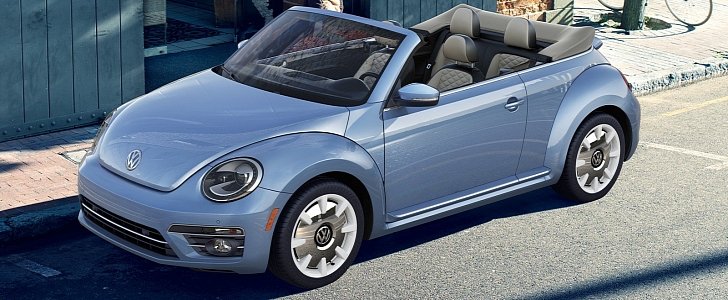Under Musk, Tesla is breaking all records. The electric car-maker achieved a record production of 87,048 vehicles and record deliveries of approximately 95,200 vehicles in the second quarter of 2019. San Francisco: For many of us, Tesla is a new entrant in the global auto industry but Elon Musk has actually become the longest serving… Continue reading Musk now most tenured CEO in global auto industry
Tag: Daimler
German automotive supplier ZF to deliver powertrain for Daimler’s new electric SUV
BERLIN, July 10 (Xinhua) — The powertrain components of Daimler's new electric SUV, the EQC, will come from German automotive supplier ZF Friedrichshafen AG, announced Wolf-Henning Scheider, chief executive officer (CEO) of ZF, in an interview with the newspaper Stuttgarter Zeitung on Wednesday.
Germany's third largest automotive supplier will provide the “complete driveline module” for Daimler's EQC family, from electric motors to single-gear transmissions with differentials, as well as the control software, Scheider explained.
The order placed by Daimler was “an important milestone,” Scheider said, but did not specify the volume of the powertrain order. It is up to Daimler to reveal any “details” of the deal, he said.
Last week, ZF already announced its “second largest single order” by Fiat Chrysler Automobiles (FCA) for eight-speed automatic transmissions, which “feature an integrated electric drive for hybrid variants.”
ZF's cooperation with FCA “confirms our s..
Volkswagen Beetle Production Comes To A Grinding Halt
autoevolution
cars
moto
news
car reviews
spyshots
driven cars
space junk
green
newspaper
Compare Cars
BAC Calculator
Editorial
Coverstory
Motorsport
Testdrives archive
Auto Shows
Tuning
Car Finder
Photo of the Day
Glossary of automotive terms
Masthead
RSS Feeds
More on this:1 Here Are Some of the Car Parts that Go into the Volkswagen ID.32 Volkswagen Reportedly Agrees To Share MEB Electric Vehicle Platform With Ford3 White Paper on Automated Driving Is as Complicated as Math4 Volkswagen ID.R Beats McLaren-Mercedes MP4/13 F1 Car at Goodwood, Sets Record5 Volkswagen ID.R Goes After Nick Heidfeld’s Record at Goodwood
Up Next
Buick Updates Enclave For 2020 Model Year
Volkswagen Beetle Production Comes To A Grinding Halt
10 Jul 2019, 16:56 UTC ·
by Mircea Panait
Home > News > Car Profile
Starting at $20,895 in the United States, the Beetle is no longer available to order. The final example of the breed – a coupe finished in Denim Blue – will be exhibited at the Volkswagen museum in Puebla. Speaking of which, the first-ever Beetle manufactured in Mexico rolled off the assembly line in 1967.
12 photos
Known as the Type 1 back when Volkswagen was nothing more than the dream of a mad man, the Beetle was redesigned from the ground up in 1997 with the introduction of the New Beetle. In other words, it was a re-bodied Golf Mk. 4 with a flower vase next to the steering wheel. Then the Volkswagen Group A5 vehicle architecture of the Golf Mk. 6 served as the building block for the current model, packing up to five cylinders and 2.5 liters of displacement.
From air cooling to liquid cooling, rear-engined to front-engined, body-on-frame to unibody, the Beetle had a long and interesting run since it was unveiled in 1938. Soon after the second war to end all wars, the factory in Wolfsburg transitioned to civilian Beetle production in 1947. As a side note, Wolfsburg was founded in 1938 by the Nazi regime to house the German automaker’s workforce.
Over the years, the Beetle has been treated to countless special editions and one-off concepts. The Barbie, Denim, and Dune come to mind, but Volkswagen doesn’t plan to revive the nameplate anytime soon. Production at the Puebla factory will be reallocated to a compact SUV tailored to North America, slotted below the seven-seat Tiguan which is called Tiguan Allspace in the Old Continent.
Even without the Beetle, the peeps at Volkswagen took inspiration from the little bug when developing the ID.3 electric hatchback. The MEB-based vehicle features an electric motor at the rear, driving the rear wheels with up to 204 PS (201 horsepower) and 310 Nm (229 pound-feet) of torque.
The I.D. Buggy concept is rumored to enter limited production in the 2020s on the MEB, and if Volkswagen proves the rumors true, then the Beetle would get a spiritual successor of sorts. The best-known buggy with Beetle underpinnings is the Meyers Manx, which was built in limited numbers in the 1960s.
click to load Disqus comments for this storyThis enables Disqus, Inc. to process some of your data.
Smoke and Mirrors: Volvo's New Top Speed Limit
Get Your Kids Driving This Summer: 5 Best American Ride-On Toys
Headwave TAG Helmet Music and Navigation System Reviewed
Car, Go Make Me Some Money!
5 Must Have Truck Bed Accessories Your Pickup Badly Needs
Interview with Lamborghini EMEA CEO, Andrea Baldi: Hybridization, Female Buyers
On Electric Harleys and New Generations
The Dos and Don’ts of Washing a Motorcycle, Part One
When Ford Told Ferrari to Shove It Using a Race Car
Could Volkswagen Group's Electric Plans Include Ducati?
5 Top Rated Electric Scooters to Cure Your Lime and Bird Addiction
Aprils Fools' Pranks We’d Love or Hate to See Come True
The Perversion of the Fast and the Furious
Upgrading Your Car: Top 5 Ambient Lighting Ideas
The Biggest Anticipations in Motorcycling for 2016, Part 1
The Engine Start-Stop Systems Conspiracy
The Dos and Don’ts of Washing a Motorcycle, Part Two (Final)
Alfred Neubauer: the First “Don” of Motor Racing
Manipulated Into Liking Cars
How to Choose the Best Dashcam for Your Car
Can Cars Be Hacked? Inside Secure CSO Asaf Ashkenazi Says Yes. By Anyone
VOLKSWAGEN models:VOLKSWAGEN Passat GTE CompactVOLKSWAGEN Passat CompactVOLKSWAGEN Passat Variant GTE MediumVOLKSWAGEN Passat Variant MediumVOLKSWAGEN Passat Alltrack MediumAll VOLKSWAGEN models
googletag.cmd.push(function(){ window.slot4 = googletag.defineSlot(“/1004334/AE_news_300x600_noref”, [300, 600], “AE_news_300x600_noref__slot_4”).addService(googletag.pubads()); googletag.display(“AE_news_300x600_noref__slot_4”); });if(typeof window.REQUEST_NONPERS !== “undefined”) { console.log(“manref”); googletag.pubads().refresh([window.slot4]); } '+'ipt>';
if(i==3) txt+='googletag.cmd.push(function(){ window.slot5 = googletag.defineSlot(“/1004334/AE_news_300x250_noref”, [300, 250], “AE_news_300x250_noref__slot_5”).addService(googletag.pubads()); googletag.display(“AE_news_300x250_noref__slot_5”); });if(typeof window.REQUEST_NONPERS !== “undefined”) { console.log(“manref”); googletag.pubads().refresh([window.slot5]); } '+'ipt>';
}
txt+=””+
“”+
“”+data[i][0]+””+
“”+
“”+
“”+data[i][2]+”
“+
“”+
“”+
“”;
}
txt+=””;
$('#morescroll').html(txt);
nxloaderactive=false;
});
}
function aenext_lzy() {
$(window).on(“scroll”, function() {
if(nxstories!=false) return;
var footOffset = $(“#footer”).offset().top;
if($(window).scrollTop() > footOffset – $(window).height() – 600) aenext_load();
});
}
function aenews_fixoverlaps_actual() {
window.aeoverlapst=-1;
var $rsoc=$(“.rightsocial”).first();
if($rsoc.length!=0) {
var rsocofs=$rsoc.offset().top;
var $newsgal=$(“.newsgal”).first();
if($newsgal.length==0) return;
var ngofs=$newsgal.offset().top+$newsgal.height();
if(rsocofs commentsOffset – $(window).height() – 400) anyclip_load();
}
}
}
function anyclip_load() {
var d = document, s = d.createElement('script');
s.src = 'https://player.anyclip.com/anyclip-widget/lre-widget/prod/v1/src/lre.js';
s.setAttribute('id', 'lre-player-widget');
s.setAttribute('pubname', 'autoevolutioncom');
s.setAttribute('widgetname', '0011r00002IZQzB_730');
(d.head || d.body).appendChild(s);
window.acLoaded = true;
}
GLC and GLC Coup?: Starting signal for the series production at the Bremen plant.
About the Bremen plant. With a workforce of more than 12,500, the Mercedes-Benz plant in Bremen is the largest private-sector employer in the region. Eleven models are currently produced at the site: the Saloon, Estate, Coupé and Cabriolet of the C-Class, the Coupé and Cabriolet of the E-Class, the GLC cross-country vehicle, the GLC Coupé,… Continue reading GLC and GLC Coup?: Starting signal for the series production at the Bremen plant.
Volvo solves autonomous revenue riddle with package deals
STOCKHOLM (Reuters) – Swedish truckmaker AB Volvo’s first commercial autonomous truck deal shows how it is bundling services to generate revenue from a technology that is years away from wide deployment. FILE PHOTO: A self-driving Volvo electric truck with no cab called Vera is seen during a presentation in Berlin, Germany, September 12, 2018. REUTERS/Emma… Continue reading Volvo solves autonomous revenue riddle with package deals
Harald Krüger To Step Down As CEO Of BMW
Invest
Electric Cars
Electric Car Benefits
Electric Car Sales
Solar Energy Rocks
RSS
Advertise
Privacy Policy
Autonomous Vehicles
Published on July 6th, 2019 |
by Steve Hanley
Harald Krüger To Step Down As CEO Of BMW
Twitter
LinkedIn
Facebook
July 6th, 2019 by Steve Hanley
Just a few days ago, Klaus Fröhlich, the head of research and development for BMW, was whining to the press that nobody wants to buy electric cars. Well, actually, as it turns out, nobody wants to buy BMWs if the latest financials for the company are any indication. According to the Toronto Star, BMW has seen its position as Germany’s luxury car leader evaporate over the past few years and is facing strong financial pressure associated with developing electric and self driving cars that can compete with the likes of Tesla and other manufacturers.
The BMW Group has delivered more than 100,000 electrified vehicles to customers worldwide in 2017, as promised at the beginning of the year. An eye-catching light installation transformed the BMW Group headquarters, the world-famous “Four-Cylinder” in the north of Munich, on the evening of 18 December 2017 into a battery. (Ralph Larmann, 12/2017)
Now it reportedly will not renew the current contract for its CEO, Harald Krüger, when it expires next April. The company has just reported its weakest earnings in a decade, a reversal after sporting some of the highest profit margins in the automotive business for many years.
Krüger was chosen to lead the company in December, 2014 after his predecessor, Herbert Diess, left unexpectedly to take the reins at rival Volkswagen. In a statement to the press, he said, “After more than 10 years in the board of management, more than four of which as the CEO of the BMW Group, I would like to pursue new professional endeavors and leverage my diverse international experience for new projects and ventures.”
It is customary for German companies to renew the CEO’s contract one year before its termination. When BMW did not do so in April of this year, it started speculation that Krüger would step aside when his contract ended instead of signing on for another 5 year term.
BMW was once thought of as a leader in the nascent electric car field when it brought its highly innovative BMW i3 electric car to market in 2013. But, the company failed to capitalize on its early lead as it struggled to find a way forward for EVs.
BMW i3s at the National Drive Electric Week Event in Oxnard, California. Image credit: Kyle Field | CleanTechnica
Krüger was “too cautious,” Ferdinand Dudenhoeffer, director of the CAR Center for Automotive Research at the University of Duisburg-Essen tells The Star. “BMW was not able to use the head start for a new generation of electric vehicles.”
David Bailey, a professor at the Birmingham Business School, told CNN that BMW needed to accelerate its move into new technologies. “[Krüger has] done a very good job in recent years, but BMW faces some very big challenges going ahead. They felt the needed to bring in somebody new given the scale of the challenge.”
The Tesla Effect
It has not been lost on management or customers that the Tesla Model S is now the best selling large luxury car in Germany, which is hugely embarrassing to BMW as well as Mercedes-Benz and Audi. We may never know exactly how the changes in the marketplace brought about by Tesla have affected the fortunes of those companies but there is little question it has roiled the industry and forced companies to confront the coming electric vehicle revolution faster than they might done otherwise.
The Tesla Model S. Image courtesy: Tesla
In addition to being hit with an antitrust penalty of $1.6 billion by EU authorities recently, BMW has has been adversely affected by a rise in tariffs on vehicles exported to China from its plant in South Carolina due to the tariff war going on between the US and China. In March, it downgraded its profit projections for 2019 and announced a cost saving plan that will trim $13.6 billion in costs by the end of 2022. That plan focuses on dropping some models and streamlining vehicle development.
Bankwupt?
BMW says it is rushing to bring electric cars to market, but in truth, when your head of R&D says nobody wants to buy electric cars it is hard to take such statements seriously. At CleanTechnica, we have said for a while that some traditional car companies may go out of business or be forced to merge with other companies as a result of the arrival of electric vehicles.
BMW and Mercedes have indicated they will collaborate on the development of electric and self driving cars, a sign that a consolidation in the industry may already be under way. Unless BMW can get back on track with its development of competitive electric, autonomous vehicles, it could even be the first traditional automaker to go bankwupt — but it probably won’t be the last.
About the Author
Steve Hanley Steve writes about the interface between technology and sustainability from his home in Rhode Island and anywhere else the Singularity may lead him. His motto is, “Life is not measured by how many breaths we take but by the number of moments that take our breath away!” You can follow him on Google + and on Twitter.
Back to Top ↑
Intern OpportunitiesWe Need You! Internship Program Openings
Advertisement
Advertise with CleanTechnica to get your company in front of millions of monthly readers.
CleanTechnica Clothing & Cups
Top News On CleanTechnica
Join CleanTechnica Today!
Advertisement
Advertisement
Follow CleanTechnica Follow @cleantechnica
Our Electric Car Driver Report
Read & share our new report on “electric car drivers, what they desire, and what the demand.”
The EV Safety Advantage
Read & share our free report on EV safety, “The EV Safety Advantage.”
EV Charging Guidelines for Cities
Share our free report on EV charging guidelines for cities, “Electric Vehicle Charging Infrastructure: Guidelines For Cities.”
30 Electric Car Benefits
Our Electric Vehicle Reviews
Tesla News
Cleantech Press Releases
Hannon Armstrong & Summit Ridge To Jointly Invest In Community Solar; Initial Projects Launching in Maryland
“That Was Quick” Category: Carbon Engineering Partners With Occidental To Pump More Oil
Texas Cooperatives Agree to Purchase 7 MW of Distribution-Scale Solar Energy
38 Anti-Cleantech Myths
Wind & Solar Prices Beat Fossils
Cost of Solar Panels Collapses
© 2018 Sustainable Enterprises Media, Inc.
Invest
Electric Cars
Electric Car Benefits
Electric Car Sales
Solar Energy Rocks
RSS
Advertise
Privacy Policy
This site uses cookies: Find out more.Okay, thanks
With global ambitions, VC firm Maniv Mobility raises $100 million from automakers, suppliers
What started as an accident has turning into a venture firm with a global reach and backing from a some of the biggest corporations in the automotive and transportation industries. Maniv Mobility, the Israel-based venture capitalist firm, said Tuesday it has closed a new $100 million fund backed by 12 corporations, including the venture arms… Continue reading With global ambitions, VC firm Maniv Mobility raises $100 million from automakers, suppliers
Maniv Mobility Closes Second Venture Capital Fund, at $100M
Maniv Mobility, a Tel Aviv, Israel-based mobility venture capital firm, closed its second fund, at $100M. Limited partners include Alliance Ventures, the strategic venture capital arm of Renault-Nissan-Mitsubishi, Aptiv, BMW i Ventures, Hyundai Motor Group, Lear Corp, LG Electronics, Shell Ventures and Valeo, Deutsche Bahn Digital Ventures, the venture arm of the German rail and… Continue reading Maniv Mobility Closes Second Venture Capital Fund, at $100M
Israel’s Maniv Mobility raises $100 mln for second venture fund
Maniv said it would continue to invest in startups that focus on data and connectivity, digital and electric mobility platforms, autonomous and autonomous-enabling technologies. JERUSALEM: Israel’s Maniv Mobility said on Tuesday it closed its second venture fund with $100 million that includes commitments from 12 companies in the automotive and transportation sectors. Among the investors… Continue reading Israel’s Maniv Mobility raises $100 mln for second venture fund
How a successful F1 race team correlates driver instincts with hard data
“ One of the most striking similarities between manufacturing and the high-octane world of Formula One is how both are trying to marry up the unstructured insights and ‘gut feelings’ of their respective experts with more structured telemetry and analytics. “Data is becoming increasingly important – not just in the world of Formula One, but… Continue reading How a successful F1 race team correlates driver instincts with hard data


